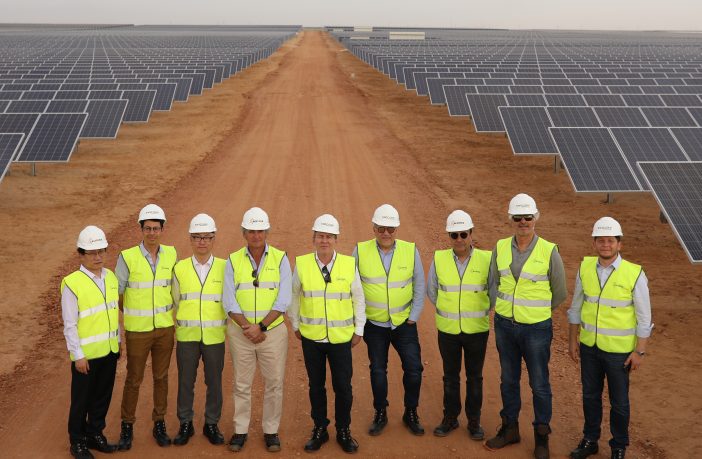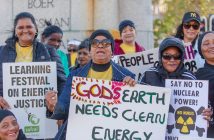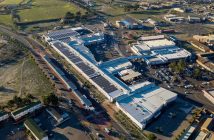- With a maximum capacity of 186 MWp (150 MW rated) the plants are located in the Benban photovoltaic complex developed by the Egyptian Government.
- A representation of the two companies, headed by their presidents, visited this renewable energy facility, in which around 160 million euros have been invested.
- The first plant will enter service in a few days’ time and the other two over the next few weeks
26 February 2018. ACCIONA Energía, the renewables subsidiary of ACCIONA Group, and Enara Bahrain Spv Wll (ENARA), the renewable energy platform of the Saudi company Swicorp, have begun commissioning work on three photovoltaic plants in Egypt with a maximum capacity of 186 MWp (150 MW rated).
Representatives of the two companies, headed by ACCIONA Chairman & CEO José Manuel Entrecanales and SWICORP Chairman Kamel Lazaar, visited the facilities yesterday. They will enter commercial service in the next few weeks.
The facilities, which will be 50% owned by both companies when they enter service, represent an investment of around 180 million US dollars (almost 160 million euros at the current exchange rate) and are located in the Benban complex set up by the Egyptian Government in the Aswan region.
“It is the first renewables project under our ownership in Egypt, a country that has set itself ambitious objectives in the development of renewable energies. This Beban PV complex –in which our three plants are included- is a great example of it as it will supply energy to more than ten thousand people”, ACCIONA Chairman & CEO José Manuel Entrecanales said during the visit. “We are satisfied at having completed the assembly of the plants, and doing it with our partner Swicorp, with whom we have had a fantastic experience. We are working together on other renewable initiatives in Africa and the Middle East”.
SWICORP Chairman Kamel Lazaar said that “there has been a tremendous synergy with ACCIONA, with all its technical know-how and its knowledge of the international market, and our knowledge of the local market and financial engineering, so it worked very well for both parties”.
The three projects in Benban come under the feed-in tariff system established by the Egyptian Administration in call for tender Round 2 published in October 2016. Overall, they will produce clean energy equivalent to the consumption of around 150,000 Egyptian homes and avoid the emission of 297,000 tonnes of CO2 per annum from fuel-oil power plants.
The power generated will be supplied to the utility Egyptian Electricity Transmission Company (EETC) under a long-term PPA contract (25 years) governed by the conditions set in Round 2. Finance for the operation has been agreed with International Finance Corporation (IFC), a World Bank body, and with Asian Infrastructure Investment Bank (AIIB), both specialized in financing private projects in emerging countries.
The plants cover a surface area of 2.88 square kilometres. 572,322 Astronergy (Chint Group) technology polycrystalline silicon photovoltaic modules have been assembled on horizontal axis trackers manufactured by STI Norland.
The construction work has taken place over eleven months with more than 1,000 people working on the sites. The first plant will enter commercial service in a few days’ time and the two others will do so over the next few weeks. With these facilities, ACCIONA will reach total installed capacity in photovoltaic power of more than 1,000 MWp (633 MWp net).
The Benban photovoltaic complex covers 37.2 square kilometres on a site provided by the Egyptian Government through its New and Renewable Energy Authority (NREA). It is equipped with the energy evacuation infrastructure required to accommodate 32 privately-owned photovoltaic plants (combined capacity: 1,800 MW).
This initiative comes under the Egyptian Government’s plan to promote renewable energies to diversify the country’s electricity mix, currently dependent on oil and gas (the latter imported) at over 90%. It also aims to boost economic growth, expected to be higher than 4% per annum in the medium term. Egypt has set itself a strategic target of covering 20% of its electricity demand with renewables by 2022 compared with 8% in 2015. This would mean 2,800 photovoltaic megawatts in operation by that date, according to NREA forecasts.
Author: Bryan Groenendaal











